When to Blanket a Horse for Winter
The Factors that Change When and How You Blanket
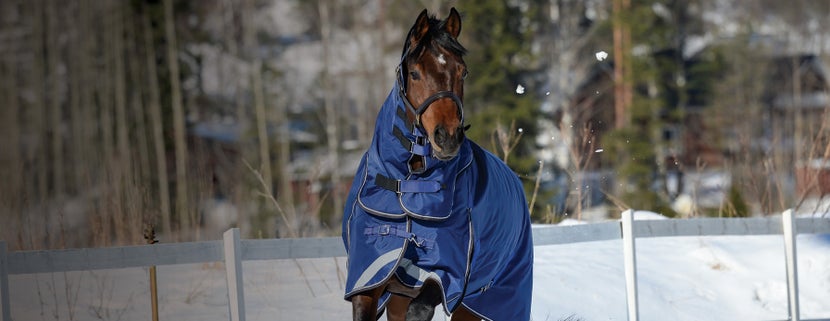
As the air turns crisp and the leaves begin to fall, your horse will likely start to look fuzzier than usual. Cue winter blanket season! The decision of whether to blanket or not to blanket can be a daunting one, but our crew of equine experts hopes to make that choice a little easier for you by discussing blanketing factors that will help you curate an appropriate blanketing program.
With our own blanket experience, knowledge of equine industry standards, and additional research, we've put together this guide to provide you with information that will address all of the elements that impact your horse's individual blanketing needs. We're here to help you determine what kind of horse blanket will work best, as well as when to start using one!
When Do Horses Need Blankets?
Whether to blanket your horse depends on a number of factors, some specific to your horse, others related to their stabling circumstances. It is important to remember that a horse's natural (unclipped) coat is meant to withstand temperatures below 30 degrees, so less is often better when it comes to outfitting them. Below, we will outline factors to consider if you are unsure whether blanketing your horse is the right decision.
Why Do Horses Grow a Winter Coat?
Horses naturally grow winter coats in response to diminishing daylight. As the days get shorter and nights grow longer, an instinctual trigger deep in the horse's brain responds and relays messages to the rest of the body to prepare for the coming cold. After a couple of months of diminishing daylight hours, a horse's winter coat starts to come to the surface. Around the same time, their summer coat begins to fall out and cause shedding. You may not be aware of this annual fall shedding because the summer coat your horse loses is mainly comprised of short hair.
The incoming winter coat is made up of hairs of different lengths, including short fine hairs and long "guard" hairs. The guard hairs provide an outer coat and block the cold while the short hairs insulate and keep the horse toasty. Your local climate influences your horse's winter coat characteristics. Horses living in the southern regions tend to grow shorter winter coats than horses in northern areas.
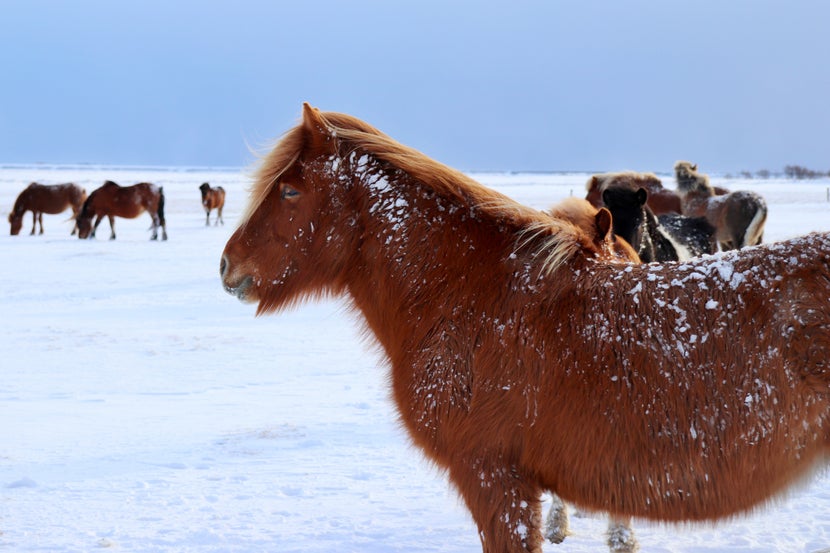
Will Blanketing Prevent a Shaggy Winter Coat?
Blanketing will not prevent the growth of the winter coat. However, blanketing does cause the hair to grow shorter because of the warmer environment for your horse. When consistently covered by blanket, the horse's body thinks it is in a warm mini-climate—even if the weather outside is wintry.
Blanketing also smooths the hair, creating an appearance of sleekness compared to an unruly winter coat. If maintaining a short, sleek coat is your objective, consider using a blanket with a neck cover; your horse will keep growing its neck hairs to fend off the cold if left unprotected.
If you blanket your horse one year and not the next, you will not inhibit their natural winter coat from growing back. It is a natural cycle that will reoccur every year, whether you decide to blanket or not.
Blanketing Factors & Questions
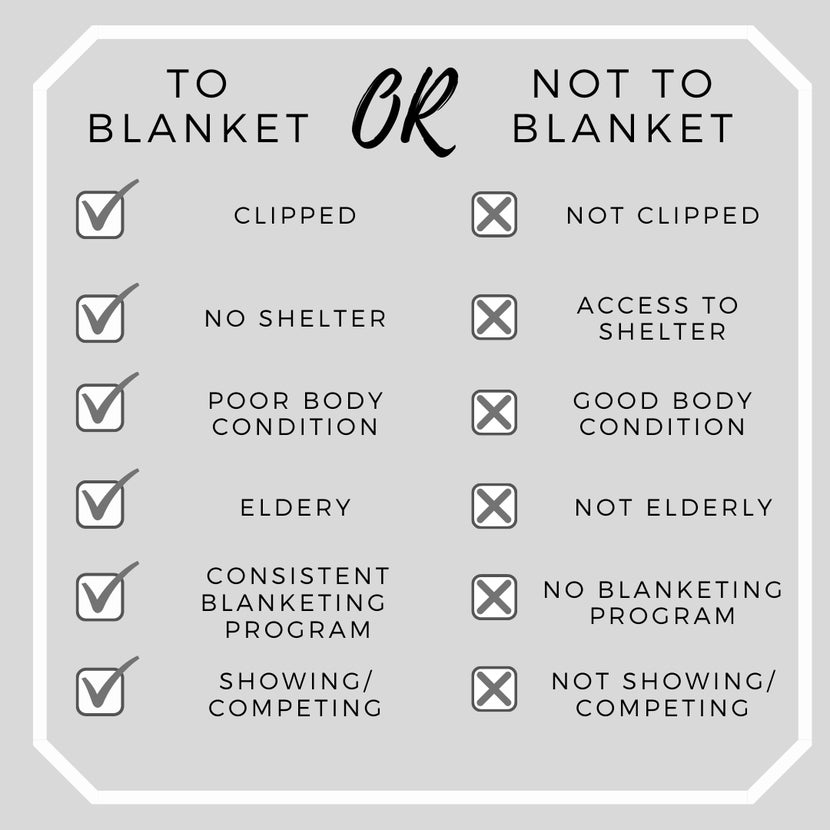
Q: Is the horse's body clipped?
Yes: Depending on the type of body clip, horses who have had their guard hairs removed will need a blanket to keep warm.
No: An unclipped horse may not need any blankets, since they can grow the necessary hair coat to stay warm.
Q: Does the horse have access to shelter?
Yes: Horses who live in a stall or have access to shelter while turned out may not need a blanket.
No: Horses without shelter may require a blanket to fend off the elements, such as particularly cold wind and/or rain.
Q: Does the horse have a good body condition score?
Yes: Horses who are easy keepers typically produce enough energy to keep themselves warm during the wintertime.
No: Horses who are hard keepers may need the additional support of a blanket to keep warm in the colder months.
Q. Is the horse older?
Yes: Horses do not process their food as efficiently as they age, reducing the amount of body heat they can produce to keep warm. Adding a blanket may be necessary for a senior horse to keep them warm and prevent weight loss.
No: Younger horses who have a sufficient amount of food can produce enough internal body heat and may not need a blanket to keep warm.
Q. Will the horse be blanketed consistently?
Yes: If your barn has a consistent blanketing schedule, or if you will be removing your horse's blanket daily, then blanketing is a good idea. Depending on conditions, horses will need their blanket removed (or at least switched to a lighter blanket) when daytime temperatures increase.
No: If your horse's blanket cannot be removed during the warmer times of the day, then blanketing may not be appropriate. Sporadic or inconsistent blanketing can cause more discomfort than choosing not to blanket at all.
Q. Is the horse showing?
Yes: Show horses typically have a full-body clip or at least a modified clip. Horses that are clipped will need to be blanketed, especially when temperatures decrease. Some competition horses who are not clipped still need to be blanketed to maintain a smooth and sleek coat. These horses must be consistently blanketed to keep the hair shorter.
No: Horses who do not compete during the winter months may maintain their full winter coat and will most likely not need to be blanketed.
Blanket Weight & Temperature Chart

Every horse is different in how they hold heat. Just like humans, they can run hot or cold; while some horses prefer to stand outside in the elements, others want to be tucked away inside. Knowing your horse will be imperative to dressing them correctly. Many horse owners over-blanket their horses, causing unnecessary discomfort for their equine companions.
While the chart below can be used as a general guideline, we highly encourage continuing your research to make an educated decision on what blanket weight and type would be the most ideal for your horse, environment, and climate. As a handy reference, take advantage of the sharable image of our when to blanket chart! Consider blanketing factors and your horse's own circumstances to determine the right blanket weight:
| Stable/Turnout Weight | Body Clipped | Unclipped |
| No Insulation |
Fleece Cooler/Sheet as Needed 50°F - 60°F |
Fleece Cooler/Sheet as Needed 40°F - 50°F |
| 0g - 80g |
Lightweight 40°F - 50°F |
No Fill Sheet as Needed 30°F - 40°F |
| 100g - 150g |
Lightweight/Medium 30°F - 40°F |
Lightweight 20°F - 30°F |
| 180g - 275g |
Medium/Heavy 20°F - 30°F |
Medium 10°F - 20°F |
| 300g - 450g |
Heavy (Possibly with Liner) Below 20°F |
Heavy Below 10°F |
The weight of a horse blanket refers to the amount of fill (insulation) it has per square meter. There are lightweight, medium, and heavyweight options with corresponding amounts of fill, ranging from 0g to 450g.
- Lightweight: No fill to 150g of insulation - A good choice for keeping your horse dry in the rain and cozy in warmer climates.
- Medium Weight: 180g to 250g of insulation - Provides protection and warmth for colder climates.
- Heavy Weight: 275g to 450g of insulation - Ideal for very cold conditions with temperatures below freezing (32° Fahrenheit / 0° Celsius).
Blanketing a Clipped Horse
We suggest blanketing your horse if they have been clipped, since clipping removes their guard hairs that protect them from the cold, rain, and snow. The weight of the blanket used will depend on the individual horse, as some horses run warm while others get cold easily.
The ideal blanket weight will also depend on whether your horse is fully body-clipped or has a modified clip. Horses that are fully body-clipped will likely need a medium weight to heavy weight blanket, even if they live in a sheltered area or an area where the temperatures are mild.
As a general rule, replace the hair you have removed from clipping with a blanket of equal weight. For example, if you have only clipped a narrow strip along the horse's sides, a lightweight blanket may suffice. If you have clipped a large area around their neck, sides, belly, and shoulders, a heavier blanket may be needed. We recommend using a lycra hood or neck attachment to cover any clipped areas around the horse's face and neck, as a clipped horse is more prone to being rubbed by a blanket.
Challenging Weather Conditions
Certain weather conditions make it challenging for your horse to stay warm, even if they are unclipped. The two most important weather elements to protect your horse from are wind and rain. Cold wind causes your horse the greatest discomfort, as it rapidly pulls body heat away from them. Wind will blow the warm air from the surface of the skin, which makes it hard for the horse to retain body heat.
Cold rain can also be detrimental, as it can chill the horse's skin when water flattens the coat and does not allow the protective layer of hair to retain heat. Note: Snow is less of a problem, because it collects on top of your horse's coat and acts as a layer of insulation.
In this blanketing article from the University of Kentucky, they make reference to a Norwegian study where "...researchers trained horses to convey choices by pointing to symbols. The horses were then exposed to different weather conditions; the horses indicated their choice to have a blanket on during weather that was wet, windy, and cold." If you choose to blanket your horse for protection against wind and cold rain, choose a waterproof turnout blanket that will not let water penetrate the blanket or soak through to the horse's coat.
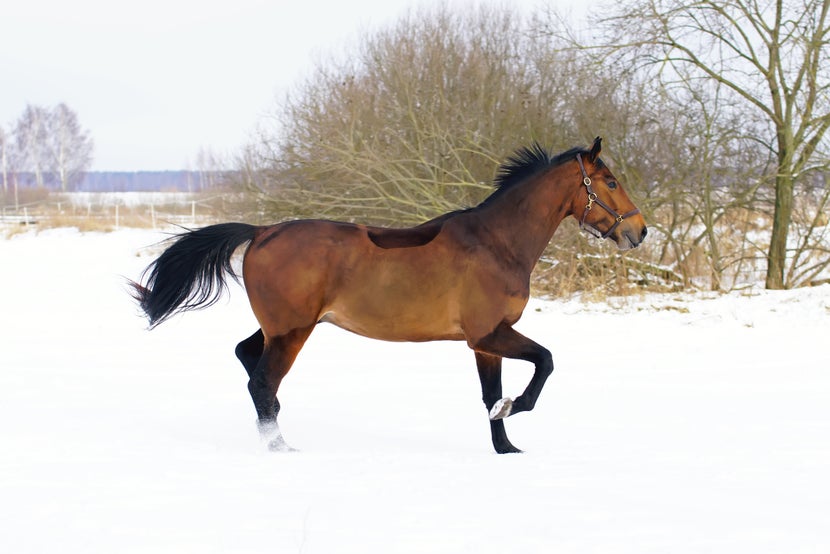
Layering Horse Blankets
A blanket liner or sheet can be used under any blanket in case the horse needs a bit more insulation. The solution of layering blankets can also help you avoid over-blanketing your horse with too heavy of a blanket. Liners are beneficial because you can change the "weight" of your blanket without having to purchase a new blanket. For example, you can add a 100g liner underneath a 0g blanket to provide more warmth as needed.
To assess if your horse is comfortable with the additional warmth from a liner, run a hand underneath the layers to check if the horse is sweating. They should be warm to the touch but not excessively hot. If your horse feels cold, that is an indication they were recently sweating, but the sweat has dried. Closely monitor your equine to avoid causing them to sweat underneath their blanket, as it will give your horse the chills.
Rely on your individual horse's internal thermostat and living situation. They will tell you what they need, and that is a much more reliable gauge than the outside ambient temperature. Also, keep in mind that it is safer to under-blanket than over-blanket!

Blanketing After Work
Properly cooling your horse out after a training session in the wintertime is crucial to their health and well-being. After your horse works up a sweat and raises its body temperature, it is important to slowly lower it back down to normal levels.
Using a cooler or anti-sweat sheet that is made from moisture-wicking fabric, such as fleece, will pull sweat away from your horse's body to help dry them off quickly. After a ride, you can place a cooler on your horse and hand walk them until they cool down. Alternatively, leave the cooler on while they are in cross-ties (or tied up in a place where you can check on them regularly). Using a towel to rub them down or groom-in product, like Coat Defense, will also speed up the drying process.
Once your horse is cool to the touch and dry, it's safe to put on their blanket or sheet. The duration of the cooling-off process will depend on how sweaty your horse is, the length of their coat, and the temperature outside. A clipped horse will dry off much faster than an unclipped horse. Ensure your horse is totally dry and their body temperature has returned to normal before putting the blanket back on.
Putting a blanket over a cooler will result in a damp cooler sitting on your horse's body until the cooler is removed. This is similar to you putting a jacket over your sweaty workout clothes and standing out in the cold! Sheets or blankets on a damp horse still equals a damp horse—and a damp sheet or blanket as well. Plan your cool down accordingly for your horse's health!
Closing Thoughts
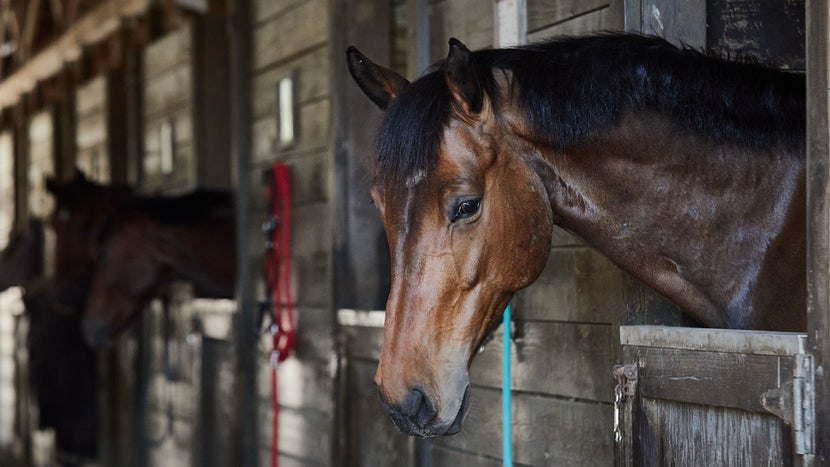
Blanketing your horse is a breeze once you have a clear understanding of the factors that your equine companion faces during the winter months. Having a closet for your horse is just as important as having a closet for yourself. As the weather fluctuates and their needs change, having options can greatly relieve stress and keep everyone comfortable. If you have any further questions regarding blankets, or if you need help picking a blanket or understanding the other factors that go into winter blanketing, check out the rest of our horse blanket guides. As always, feel free to contact our helpful customer service department at info@ridingwarehouse.com or by calling 1-800-620-9145 for any additional assistance. Happy blanketing!
Further Reading
We understand that you may want to do more research on horse blanketing and related topics. That's why we compiled some great sources, so you can take a deeper dive!
- Penn State on When to Blanket a Horse
- Auburn University with an EZ Blanketing Chart
- Rutgers University on When To Blanket or Not to Blanket
- Total Equine Veterinary Associates on when To Blanket and Not to Blanket
- University of Colorado on When to Blanket or Not to Blanket
- University of Kentucky on Blanketing Do's and Don'ts




